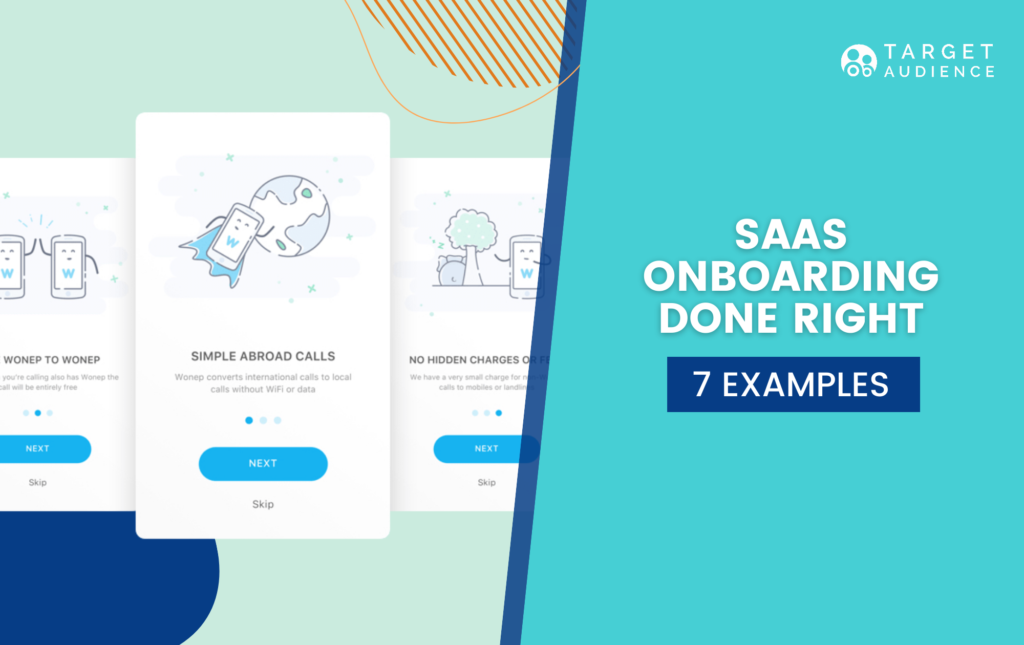A well-thought-out user onboarding process is crucial for the success of any SaaS company. It shows that you care about customer satisfaction because you’re taking the time to train users and answer any questions or concerns they have. The moments right after purchase (or free trial sign-up) are critical to hook users and grow their interest in your product.
As straightforward as user onboarding may sound, creating a process that’s simultaneously engaging, interesting, and informative is a challenging task. However, there are some companies that took this challenge on and absolutely smashed it.
In this article, we will break down what makes an effective onboarding process, why it matters, and give you a few examples of SaaS companies with incredible onboarding.
What Is User Onboarding
User Onboarding is an automated process that introduces new customers to your product or service. It includes guidance on how to use the product and why it’s worth their while. In other words, the SaaS user onboarding process shows new users how to start receiving value from your product. It lasts from the moment a user creates their account to the moment when the promise of a product is delivered to them for the first time.
There are generally two types of users who undergo app onboarding. The first are customers who are entirely new to the product and its concept. The second are those who are trying out and comparing a few different products with the same function.
Those two groups need slightly different user onboarding experiences. Completely new customers will require more practical guidance on how the product works. Someone who’s already used a similar product and has an idea of how to use it will need onboarding for the specifics of your version and how it is better than the competition.
In both cases, it’s important to include elements like user reviews, case studies, stats, and customer quotes to emphasize what sets your product apart from the rest.
Tips for A Good User Onboarding Experience
During this first interaction, the customer can either have a great experience that will lead them to the Aha! Moment (the moment they realize the unique value of your product), or they can have a disappointing experience that leaves them on the fence about your product. In the worst-case scenario, that customer can decide to forgo your service entirely and end their customer journey before it even begins.
So, what makes a SaaS user onboarding experience good? One that will draw users in and keep them hooked?
Naturally, “receiving value” means different things for different products. Here are a few questions you need to ask yourself when trying to figure out the onboarding process that will work best for *your* product.
- Who is the target user?
- What is the main goal that your product helps the user accomplish?
- What is the exact ‘Aha’ moment when the user clearly sees the value of your product? For example, sending out the first payroll.
- What are the steps to success, and which step requires the most guidance?
- Can the path to success be one-size-fits-all or should it be customized for different customer segments?
- What are the most common obstacles and objections?
- What is the most helpful type of assistance and resources you can offer?
While the user onboarding of different products can look entirely different, there are a few characteristics that successful user onboarding has in common. Here are the 6 principles for an ideal onboarding process:
- Autonomous
A good onboarding process allows users to explore the product at their own pace. Don’t obstruct the flow with ‘compulsory’ tours or guides, as this can kill genuine motivation. - Frictionless
Reduce friction to a minimum by removing all the distractions and roadblocks you can do without. - Personalized
Segment your users as early as possible based on their attributes or by posing a mini-survey on the welcome screen. Use behavior data to skip any irrelevant messages. - Brief
Efficiency is the keyword when it comes to successful user onboarding. Keep it clear and direct, and most importantly, focus on the minimum path for receiving value. - Interactive
A good user onboarding flow assists instead of informs. Big chunks of informative text are a big no-no. Interactive, and video guides convert much better and they are also just better at helping users learn because they require action.
Each step in their onboarding flow (or walkthrough) should be triggered by the required action from the previous step.
- Delicate
Treat others as you’d like to be treated. That means don’t be pushy. Keep emails to a minimum, and keep your content user-centric and thoughtful.
Examples of Good SaaS User Onboarding
1. HubSpot: personalizes the onboarding process with surveys
HubSpot utilizes personalization in the smartest way to onboard new customers. The popular SaaS tool sends new users a getting-to-know-you Q&A session with four multiple-choice questions. The survey gathers details about the user’s company, role, and what they’ll be using the tool for. This information is then used to customize the customer’s onboarding process based on their job function. This level of personalization makes the user feel seen and boosts their motivation to take action.

There is one ‘catch’ though. Hubspot’s UVP is that their CRM tool (for which they became known in the first place) is free forever. The thoroughly personalized user onboarding process is only offered to paying customers.
However, there is still plenty to learn from Hubspot’s user onboarding process for free users. They receive a welcome email and a range of interactive elements that present themselves within the platform.
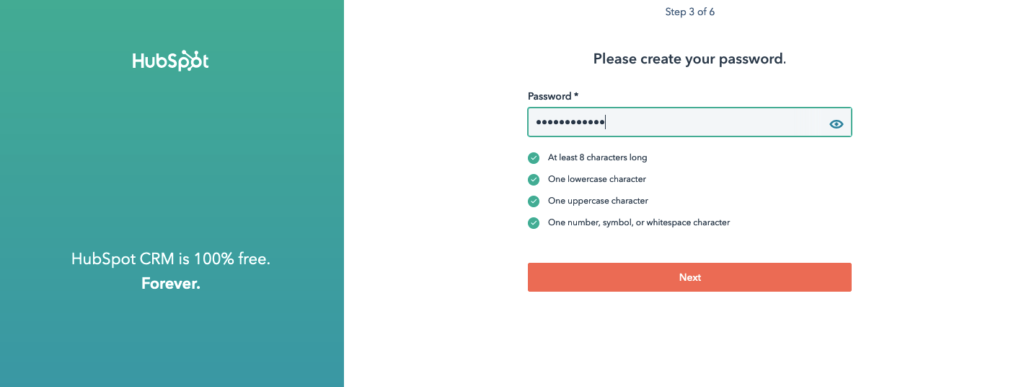
The most important thing to take away from HubSpot is its visualization of progress. When users are getting acquainted with your product during user onboarding, they must be reminded that every step they take leads to progress. HubSpot uses checklists, progress bars, and percentage values to visualize progress and accomplishments. This makes users feel productive – having a sense of progress and accomplishment leads to more action.
2. Trello: Engages users and encourages them to click around and explore
Trello, a task management and content calendar tool, has a very effective user onboarding process. What makes it work so well? Its simplicity and straightforwardness. Project management SaaS tools can often be tricky to learn. Trello solves this issue by laying everything a user needs right in front of their eyes, right on the home board.
The ‘stuff to try’ list on the left looks exactly like a regular Trello task list, and each card gives clear instructions on the steps a user should follow. When you open a card, you get a demonstration of how this function can help you organize your work.
Trello’s user onboarding sequence engages users and encourages them to take different actions and explore the platform. Learning by doing is one of the most efficient methods, and it also makes Trello’s value come to life fairly quickly.
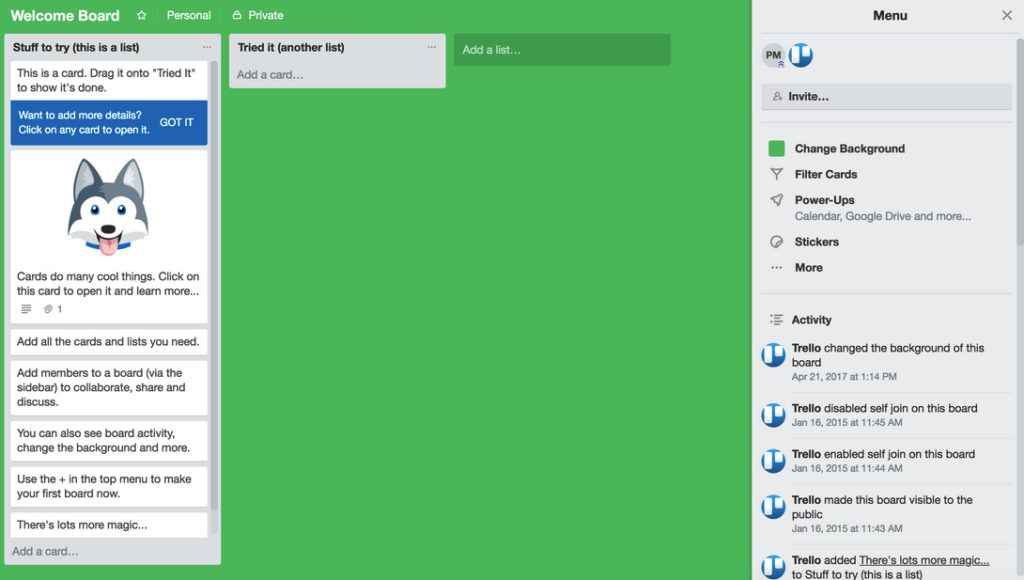
3. Asana: provides users with a self-serve content hub
Asana is another popular project management platform with a clever and accessible user onboarding process. Asana provides users with a self-serve searchable content hub that’s essentially a guide that is right there to answer any questions.
On the search page, you can quickly identify yourself as ‘just getting started with Asana’ or ‘helping my team learn Asana’. Then, you are served with relevant, helpful resources—checklists, templates, webinar links, step-by-step instructions, and self-paced online courses. The product adoption phase can be challenging, and Asana is tackling that problem by providing something to suit every learning style.
As for the user onboarding flow, Asana uses simple prompts to encourage new users to complete the user onboarding process. For example, if a user gets distracted and navigates elsewhere on the app, Asana will send a team onboarding checklist to bring them back.

4. InVision: Integrates social proof and sleek UX design
InVision is a design platform that allows users to deliver design mockups and interactive prototypes in different formats. It’s most popular for its Sketch and Adobe Photoshop plugins.
InVision does excellent use of social proof in their user onboarding flow. Alongside the key product interactions, you can see positive customer quotes about how InVision helps them do their work. The user onboarding flow is streamlined and polished, so the social proof fits naturally among other elements.
Moreover, the process is focused. There are only 6 steps in the tour that highlight key features on a toolbar that has 14 total options. If your platform is complex, don’t attempt to teach new users everything at once, as it might overwhelm them. Focus their attention on the most critical features and deliver your product’s core value.

5. Sprout Social: Actively addresses users’ concerns
Sprout Social is a social media analytics tool that helps you manage all your social accounts from one platform. To help their users coordinate their social channels and analyze engagement, Sprout Social needs access to users’ data. And getting access to data isn’t always easy, especially when Sprout Social can’t control whether or not users consent to it.
In their user onboarding process, Sprout Social solves this problem by addressing customers’ concerns regarding their privacy. They do so through a well-written modal. The copy explains exactly how Sprout Social will use this data, tells users what happens if they say no, and offers them a chance to change their minds.

This simple step has the potential of saving users who would otherwise give up on the app. The main thing to take away from Sprout Social is to identify points where users may stray off the path. Then, think about how you can prevent that or eliminate concerns and doubts like Sprout Social did.
6. UserPilot: Forges relationships with users early on
UserPilot is a SaaS tool designed to enable product teams to improve their own products’ onboarding without having any coding knowledge. As such, it is only right for them to have an outstanding onboarding process.

Userpilot has a clever strategy of developing a relationship with the user right off the bat. Firstly, when a user clicks to get a free trial, they are sent to a chat window with a bot named Ava. Ava then asks for the user’s email. Once a user has signed up for the trial, the first thing UserPilot asks them is this – what is the primary brand color they want to use. This creates immediate personalization without the friction of filling out a form or even answering a survey.
Users are then encouraged to create their first experience on the platform and are offered an interactive tour. The most important takeaway from UserPilot’s onboarding is how they reduce friction, personalize the platform in a clever way and focus directly on the tasks required to reach the Aha! moment.
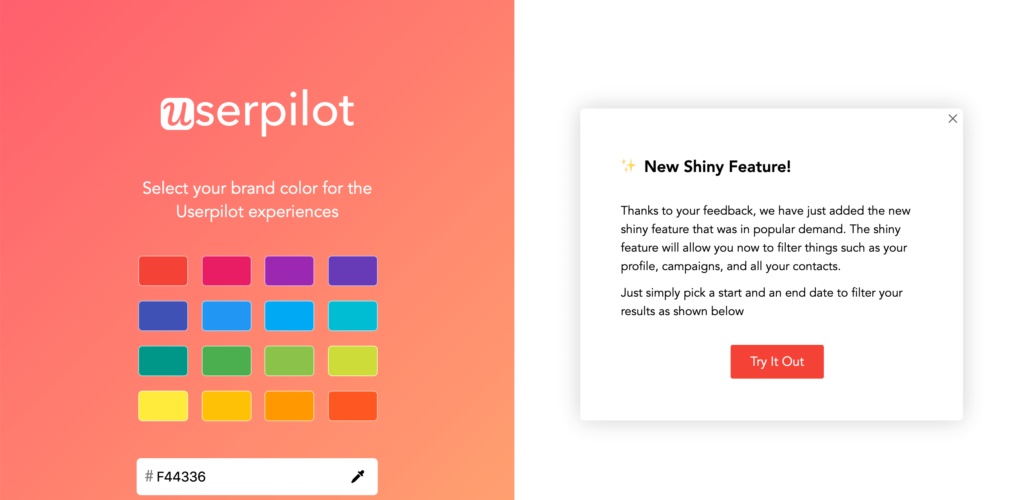
7. Moosend: Nails user onboarding through an email sequence
Moosend is a SaaS platform that specializes in marketing automation and mainly email marketing. So it’s no surprise they chose to walk onboard new users with an engaging email sequence.
The email sequence consists of 7 emails, and it works thanks to engaging copy, clear CTAs, and links to Moosend Academy, which is a series of video courses on how to use the platform’s core features.

Right off the bat, users are informed about the emails they’ll receive and how they will help them learn about Moosend. There is also a bar at the top of each email showing users their progress throughout onboarding. This motivates customers to complete the program and lets them know what they should expect.
Besides motivation, the most important takeaway from Moosend’s onboarding is that they keep users engaged. The emails contain small questions that users can reply to, adding an interactive element.
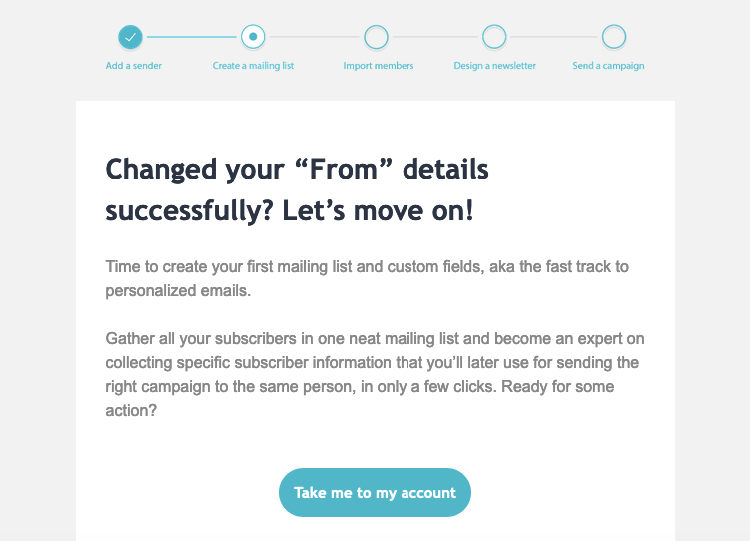
Final Thoughts on User Onboarding
The user onboarding process is critical to retaining first-time users and turning them into paying customers. It isn’t just about giving new users a few technical pointers on how to use your platform. It’s about creating a rewarding experience that will show, not tell, what your product’s value is.
SaaS companies like HubSpot, Asana, and UserPilot have leveraged personalized user flows, interactive how-to guides, and motivating customers to take action early on.
To determine which user onboarding strategy would work best for you, understand what your ideal customers would view as a great onboarding experience based on their unmet needs. By meeting your customers where they are, you’ll be able to create an accurate and thoughtful onboarding experience that will help them learn the technicalities and choose your solution over the competition.


